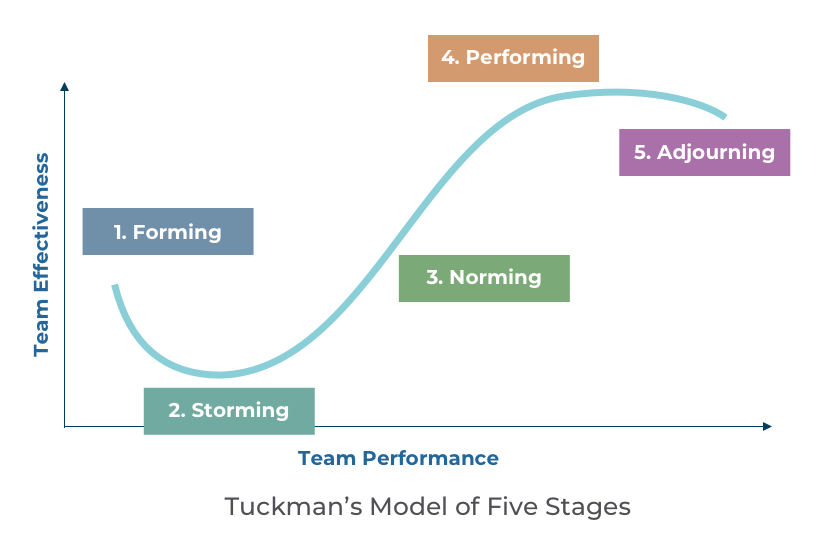What is a Team Agreement?
A team agreement plays a vital role in Agile product development, especially in the Scrum framework, serving as a tool to establish fundamental rules for teams engaged in software development projects. These guidelines are crucial for fostering productivity, mutual understanding, accountability, and harmonious collaboration among team members.
The primary objective behind crafting working agreements is to ensure a matching understanding of terms, procedures, perceptions, and values. Although these aspects may be recognized as “typical” for various teams and teammates, they may still carry quite different meanings to different people. There should never be any room for assumptions when it comes to reliability in people and processes, especially in a significant endeavor like product development.
In essence, a working agreement is a concise set of guidelines formulated by the Scrum Team to articulate the expectations team members hold for each other and their understanding of how they leverage their methodology and framework applied to their specific process. A well-crafted agreement aims to create and reinforce a clear, shared understanding of acceptable behavior and communication within the team, as well as measurable variables and important definitions.
Understanding Teams
Teams continually evolve through five stages of development, as outlined in the Tuckman model, entails five stages of development: forming, storming, norming, performing, and adjourning.
When a new team is first created, team members try to find a way of working with each other. They clash, normalize, become effective, and, eventually, adjourn. Even as new members join and others move on, the perpetual cycle of work and collaboration persists. In the midst of these changes, it becomes crucial to explicitly define responsibilities, expectations, and working methods.
Friction occurs when teams first form and becomes even worse during the growth phase. Striking a balance between delivering results and maintaining momentum can prove challenging.
Even as a team matures, circumstances may call for expansion or necessitate shifts in team roles, introducing potential conflicts. Thus, a team agreement becomes indispensable to anchor the team’s stability across its various stages. The agreement serves as a valuable resource during this transitional period, fostering a shared understanding between seasoned and new team members: a foundation for effective collaboration.

Given the recognized dynamics within the team, regular reviews of the agreement are indispensable, ensuring its adaptation to the team’s evolving needs. Iterative updates continually enhance its effectiveness. I firmly believe that the team agreement should undergo revision whenever the team experiences a significant change, such as alterations in team composition, shifts in management, updates to roles within the same team, or modifications to the product.
Why are Team Agreements Important?
Team agreements ensure transparency and clarity within teams, allowing them to redirect energy from potential conflicts to their core work, fostering mutual understanding and contributing to community growth. This advantage extends universally to both in-person and remote teams.
Crucially, a team agreement thrives on openness to suggestions. It embodies the very essence of Agility, team’s self organization and mutual trust. Establishing a clear process for submitting proposals and offering advice, whether through voting or discussions during team meetings, enhances its dynamic nature.
Explicitly defining social norms within teams might feel unusual, but it is an essential step. Without establishing mutual expectations, assumptions can lead to misunderstandings and potentially foster conflicts. Team agreements remedy this by eliminating assumptions at their embryonic stage.
Working agreements contribute to a shared sense of responsibility, facilitating the identification and discussion of both positive and negative behavior. They empower leaders to hold the team accountable and enhance overall productivity.
All team members are different, even if they were taught Agile by the same Agile coach. Their styles, perceptions, work ethics, expectations, and visions of definitions may vary. In writing, team agreements make expectations clear, eliminating assumptions and providing team members with a platform to openly discuss their priorities on various topics. An open and honest conversation about these differences not only helps clarify individual perspectives but also opens a door to mutual rapport, understanding, and knowledge-sharing. It establishes a culture where the team can openly discuss anything and is committed to continuous improvement.
And the last note on this topic. Today we are focusing on common Agile/Scrum team agreement. However, keep in mind that this blueprint can be leveraged by any kind of team, even those not self-organized. Agile teams are no different from any other team, regardless of their goals. Team agreements in software development are crucial due to the overall complexity of the work and relationships involved.
However, even for straightforward teamwork, team agreements are never redundant. They may be as simple as the team needs and dynamics. For instance, if they contain three basic rules such as ‘let’s always be on time, not speak over each other, and be open to getting together weekly to hear everyone’s concerns,’ it might seem like overkill for, say, a garage teenage band. However, it really isn’t. Any team agreement is the foundation for building respectful and considerate relationships, fostering accountability, and adopting a practical approach to successfully building collaboration and achieving the team’s goals.
If you ask me, create team agreements with your spouse or life partner. What are you if not a team? And if you feel like you are not, maybe you need team agreements the most.
In a nutshell, Team agreements ensure
Clarity and Assumption Elimination: Offering a clear description of working definitions and expectations ensures that every individual understands expectations and the communication channels. Clearly defining work processes and workflows maintains team efficiency and high productivity.
Accountability for the Product and the Team Success: Clarified roles and responsibilities allow individual members to take ownership of their tasks, providing the drive to take charge and complete their responsibilities effectively. This also lets everyone feel that together, they are the ones leading the team and their work to success.
Feeling of Trust, Safety and Work Satisfaction: Providing an appropriate outlet for raising concerns and highlighting progress ensures people feel heard and understood, creating a safety net for open communication and rapport.
Team Agreements Will Only Work if They Are…
Accessible – Ensure your Team Agreement all team member can access it at any time.
Simple – Short, easy-to-follow rules are more effective. Use brief sentences and simple lists if necessary,
Collaborative – Ensure, without imposition, that not only every team member takes part in the creation of the document but also that each individual is in true agreement with every statement in it.
Revisable – Encourage continuous improvement of your agreements and implement revisions with an established schedule. Always revise the agreements when team composition or product demands change.
Followed – One of the most important agreements in your Team Agreements must be utter dedication to an undeniable commitment to following every single agreement and a way to call out any violations respectfully.
What May be Included in a Team Agreement
Every team is different, and any team’s agreement should be unique to that team and its needs. Below are some general ideas on what Agile/Scrum teams may need to agree upon, based on my experience, regarding areas that are usually in need of specific clarity due to their ambiguous nature or a high chance for assumptions.
Individuals, Roles, Availability
In an agile team, various functions may be intertwined. For example, a typical product team comprises roles such as Scrum Master, Product Manager, Product Owner, QA analyst, and Dev lead. All of these roles depend on each other’s work, and sometimes resources are shared among multiple teams, as Scrum Masters often are. Occasionally, individuals may carry responsibilities for multiple roles, such as being both a Scrum Master and a Product Owner. Some teams prefer to distribute Scrum Master responsibilities among team members and rotate in this role. All of these aspects can be specified in the team agreement.
Methodology/Framework/Technology specific definitions
In an Agile/Scrum environment, teams may set their agreements on things like which Agile/Scrum elements they will leverage and how. Methodology-related agreements are especially important as Agile is… well, agile, and it can definitely be flexibly tailored to the team’s needs.
Some teams prefer daily stand-ups; some think that they are not necessary as long as the team meets a couple of times a week for syncs. Some teams like to attend stand-ups online; some prefer just logging in their status in a special chat (like Slack) and save 10-15 minutes. Some teams like two-week sprints; some – three or four.
How do we measure stories? Should we limit work in progress? What’s our definition of done? Will we allow defects to be deployed to Production, and if yes, how do we define which defects may go live? How do we go about retrospectives, and who leads them?
Communication and communication channels
This not only speaks on just day-to-day communication but mostly about situations that arise unexpectedly. How and how should we inform of unexpected absence, how do we communicate urgently arisen impediments, how do we process concerns that we don’t want to share with the whole team for any reasons. How do we approach stakeholders, especially in higher ranks, how do we convey demo progress meetings, how do we handle conflict resolution – all of these, as well as communication channels and expectations, may be outlined in Team agreements.
Workflows
Workflows go beyond just a Jira story status and workflow and spread over team’s working hours, meeting attendance and format, such as – do we use cameras in all meetings if we work remotely, can we use our phones during work hours and text each other, or will we only utilize online communication software. And what kind of tools are we agreeing to use as well as not to use to facilitate our processes.
Are there penalties for being late to meetings? If they are online, should they be recorded? Who documents what and when, do we use automation, how do we organize peer reviews, what are our environments (Dev, QA/Stage, Production)? How do we handle change requests?
Do we have an environment to quickly get together and interact on challenging development aspects? Are we set up to have quick surveys among team members if needed? Do we celebrate birthdays, and are we allowed to joke and share funny memes?
Everything that is related to day-to-day activities that you want to agree upon may be documented here.
Collaboration
Collaboration is vital for Agile/Scrum teams, and team agreements play a crucial role in fostering this environment. Respecting each team member’s chance to share opinions encourages open communication and values diverse perspectives.
Skill development commitment during sprints enhances individual capabilities and overall team effectiveness. Encouraging asking for help, transparency, and honesty creates an environment where challenges are openly shared.
Active provision of constructive feedback is integral for continuous improvement. Team agreements emphasize giving and receiving feedback positively, contributing to collective learning. In summary, collaboration-related team agreements focus on fostering respect, equal participation, skill development, help-seeking behavior, and a culture of transparency and constructive feedback.
Agreement enforcement and revision
A vwey important area of the agreement is how it will be enforced. If it’s not followed and team members are not held accountable for not adhering to it, the whole idea of the agreement is rendered useless. In this case, a manager might as well just set up rules and order everyone to follow them.
The enforcement must be respectful and considerate, ensuring that even if team members do not honor any of the agreements, they need to know that they will not be considered rule breakers. Instead, they will be heard regarding their reasoning, creating a safe and collaborative environment. A great way to make sure team members follow the agreements is to remind them about them during sprint.
It’s also highly recommended to include, as part of the agreement, rules that facilitate continuous revision. This involves adding previously undiscussed but important items, modifying what’s not working, and revisiting the agreement when there are changes in team composition or project profile.
How To Successfully Create a Scrum Team Agreement
First of all, in my humble opinion, it’s good to have Team Agreements creation as the very first thing a new team does together before any work even starts. For a simple reason that no work can start before the initial grooming is done and at least a couple of sprints are planned. Without knowing important details like how the team will be setting up their process, it can’t possibly move towards story refinement or planning the first sprints.
As an introduction to the team agreement workshop, it might be good to go over Agile values and what they mean to the team members. Not surprisingly, due to certain Agile values’ ambiguity, some people misinterpret them or even misunderstand them completely. That’s if they are familiar with Agile values at all. Be ready to go over the Agile manifesto and have a quick discussion on how the team understands Agile.
Here are a few steps that can be taken by anyone who wants to take a lead in the process of creating the agreements document:
- Invite every single team member to an Agreement writing workshop — even if a single team member is absent, the purpose of agreements is defeated. Don’t make this mistake; make sure that everyone is present.
- Agree on the Agreements medium — The very first thing is to decide where the agreements will be hosted so everyone on the team can access them at any time during work hours.
- Be prepared — Many times, Team agreements are something new to some team members. Not every team leverages them, and some team members may be just new to any team. So, it’s always recommended that the Team agreement facilitator has some basic template ready and that they go over the very idea of having Team agreement and how it works. And then go over the template.
- Identify areas of interest and vote to decide on what to include — There are always agreements that are most important, such as sprint duration, story estimation system, work hours, and other items that have to be set up and, if not discussed, won’t let you proceed successfully with all team members feeling that those were their choices and not something imposed on them. Keep the initial agreement lean—simple and short. You can always add more items if needed in further iterations.
- Complete the Agreement — Ensure that the final agreement reflects the consensus of the whole team. As a final step, go around everyone and ensure that every single person is in complete agreement with everything that was documented exactly the way it was documented. Otherwise, it’s not really an agreement if we are not sure we all agree.
- Set up a cadence for agreement revision — If the team decides (hopefully they do) to continuously revise the agreement, establish the revision meeting schedule at reasonable intervals. Every quarter or every few sprints may be enough.
.……….……….
For the team to embrace the evolving Team agreement, it must be transparent and accessible. The agreement reduces frustration, facilitates open communication, and prevents conflicts. Crafted by the team for the team, it’s easily implementable and serves as a reference during conflicts. It’s a valuable tool for creating a secure space for growth without compromising efficiency.




No responses yet